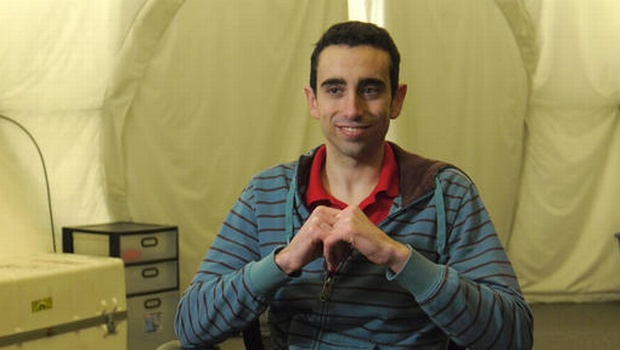-
Tips for becoming a good boxer - November 6, 2020
-
7 expert tips for making your hens night a memorable one - November 6, 2020
-
5 reasons to host your Christmas party on a cruise boat - November 6, 2020
-
What to do when you’re charged with a crime - November 6, 2020
-
Should you get one or multiple dogs? Here’s all you need to know - November 3, 2020
-
A Guide: How to Build Your Very Own Magic Mirror - February 14, 2019
-
Our Top Inspirational Baseball Stars - November 24, 2018
-
Five Tech Tools That Will Help You Turn Your Blog into a Business - November 24, 2018
-
How to Indulge on Vacation without Expanding Your Waist - November 9, 2018
-
5 Strategies for Businesses to Appeal to Today’s Increasingly Mobile-Crazed Customers - November 9, 2018
Boredom hardest part of isolation: NASA crew
One year ago today, six scientists from around the world began a space mission in a geodesic dome on Hawaii’s Mauna Loa volcano as part of the University of Hawaii’s, Hawaii Space Exploration Analog and Simulation, or HI-SEAS program.
Advertisement
They could only head outside while wearing spacesuits.
Hawaii Space Exploration Analog & Simulation (Hi-SEAS) conducted Mars simulation, an exploration analog study run by the University of Hawaii. The participants could only eat food that was able to keep for a year, meaning there were no fresh vegetables and fruits on the menu.
To simulate real conditions on Mars, the six scientists experienced 20-minute delays in communication when emailing.
During their excursions, the team members removed a vast amount of garbage from the flanks of the volcano in their excursions.
The dome seen in the image here was 36-feet in diameter and 20-feet tall.
The dome had composting toilets and showers, and was powered by solar energy.
“It is an open concept design that includes common areas such as kitchen, dining, bathroom with shower, lab, exercise, and work spaces”. On the second floor, there were six small bedrooms and a bathroom.
The study, according to USA Today, was the second-longest of its kind, surpassed only by a 520-day experiment in Russian Federation. Going outside did not have a scientific goal, according to Tristan Bassingthwaighte.
“Showing that it works, you can actually get water from the ground that is seemingly dry”, said German researcher Christiane Heinicke.
Astronauts have long set their sights on traveling to Mars, and now they may be one step closer to learning what it takes to mount a successful mission.
Heinicke also seemed a little salty about her fellow scientists, saying, “The other big enemies, of course, are the rest of the crew”.
Kim Binsted is HI-SEAS principal investigator, and although she can not discuss specific conflicts that took place during the one-year-simulation -both to protect the crew and because the study has not been finished- she said that disagreements in a team are something inevitable.
The goal of HI-SEAS is to test what it would be like for people to live on Mars, and what the project designers call “team performance and cohesion” – or how a group of strangers might handle being stuck together for 12 months.
Binsted said that selecting and training people for solving conflict situations is something possible to do, in contrast, to select and train people to not have disagreements for more than 900 days is not.
The crew members are confident that a mission to Mars could succeed.
Advertisement
Some of the troubles the crew had to face while living in the dome was fixing the plumbing shut down, Bassingthwaighte said. Verseux and Gifford shared the same concern. She also said there would be three members of the team she would be keeping in close touch with in the future.




























